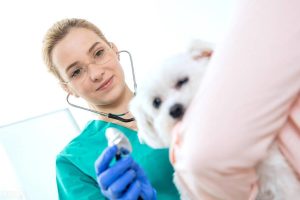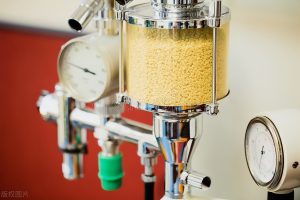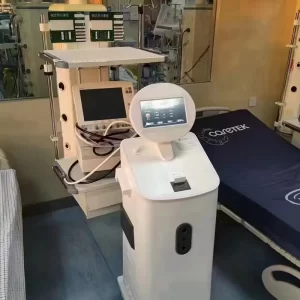In the field of anesthesia, particularly in veterinary practice, the use of anesthesia machines poses a higher risk of cross-infection. This increased risk can be attributed to the higher prevalence and easier transmission of viruses and bacteria on animals' bodies.

Understanding the Risk Factors:
Animal-Associated Viruses and Bacteria:
Animals naturally harbor a wide range of viruses and bacteria on their bodies. These microorganisms can pose a risk of cross-infection during anesthesia procedures. Veterinary anesthesia machines, being in direct contact with animals, are more susceptible to contamination and subsequent transmission.
Close Proximity to Infected Animals:
Veterinary practices often involve treating animals with various illnesses or infections. The proximity of infected animals to anesthesia machines increases the likelihood of cross-infection. It is imperative to implement stringent measures to prevent the transmission of pathogens between animals and through the anesthesia equipment.
Mitigating Cross-Infection Risks in Veterinary Anesthesia Machines:
Rigorous Cleaning and Disinfection Protocols:
Developing and implementing robust cleaning and disinfection protocols is crucial to minimize cross-infection risks. Regular and thorough cleaning of anesthesia machines should be conducted before and after each use, following established guidelines. The use of suitable disinfectants with proven efficacy against animal-associated pathogens is essential.
Proper Handling of Contaminated Equipment:
Veterinary staff should be trained in the proper handling of contaminated equipment to prevent cross-contamination. This includes wearing appropriate personal protective equipment (PPE), such as gloves and masks, when handling animals and anesthesia machines. Staff should also follow strict hand hygiene practices to minimize the risk of transferring pathogens.

Dedicated Equipment for Infected Animals:
Whenever possible, it is advisable to designate separate anesthesia machines for infected animals to prevent cross-contamination. This segregation helps reduce the risk of transmitting pathogens to other animals undergoing anesthesia.
Use professional disinfection equipment
The anesthesia breathing circuit sterilizer connects the internal pipelines of the anesthesia machine to one-click sterilization to achieve zero-risk cross-infection and solve the fundamental problem of viruses and bacteria.

Regular Maintenance and Equipment Inspections:
Routine maintenance and inspections of veterinary anesthesia machines are essential to ensure their proper functioning and minimize the risk of cross-infection. Regular checks should be conducted to identify any signs of wear, damage, or malfunction that could compromise the machine's effectiveness or facilitate the spread of pathogens.
Conclusion and Recommendations:
In the veterinary field, maintaining cross-infection control in anesthesia machines is of utmost importance. The higher prevalence and easier transmission of viruses and bacteria in animals necessitate stringent measures to mitigate the risk. By implementing rigorous cleaning protocols, proper handling of contaminated equipment, using dedicated equipment for infected animals, and conducting regular maintenance, veterinary practices can effectively control cross-infection risks associated with anesthesia machines.